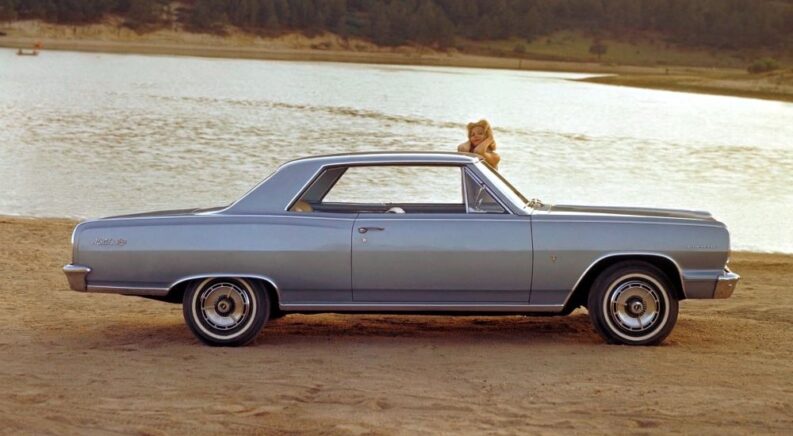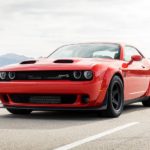The American automotive industry saw the burgeoning popularity of muscle cars in the 1960s, with models like the Pontiac GTO leaving everyone stunned with its debut in 1964. Pontiac delivered the unimaginable with the GTO: a lightweight muscle car with a 389 cubic inch V8 engine capable of producing 348 hp. A revolution ensued, with automakers throwing their hats into the ring with rival models. Even Chevrolet joined the race, laying the groundwork with the Chevelle.
The 1964 Chevelle wasn’t intended to rival the Pontiac GTO, at least not in its debut year. Instead, the Chevelle was meant to impress as a midsize sedan with an expansive lineup of trims, features, and powertrains that garnered acclaim and led drivers to their local Chevy dealer. Chevrolet added to the sedan’s appeal by introducing its first factory-built hot rod, the Chevelle Malibu Super Sport, in 1965. This put the automaker closer to leading the muscle car race, paving the way for the legendary Chevelle Malibu SS 396 Z16 and an era of big-block power.
Put It in a Memo: A Message Heard Loud and Clear
The Chevelle Malibu SS fell short of the Pontiac GTO, with its 283 cubic inch V8 engine producing only 220 hp. Drivers could get as much as 300 hp out of the large 327 Turbo-Fire V8 power plant, but it wasn’t a genuine rival to the factory-built muscle car from Pontiac. However, Chevrolet’s competitive spirit took hold, inspiring the automaker to eke more power out of its newest model without overstepping General Motors’ company-wide regulations. The automotive conglomerate refused to equip anything but its full-size powerhouses with a 400-cubic inch or larger engine. Chevrolet had to find a workaround and fast.
Fortunately, Chevrolet had something special in the works, intending to capitalize on the insatiable need for speed and the lure of exclusivity. The company released an internal memo in late 1964 announcing a new model would introduce a big-block V8 engine that would put the Pontiac GTO and every other muscle car on high alert. “This is a special project to create a stir about the new 396 engine,” the memo read. “Having this engine at 375 hp rating in a light car results in a street machine that may be the most potent and ‘fun’ car in the country.”
The memo ignited widespread curiosity, fueling excitement around the mystery model. It was all part of Chevrolet’s plan to dangle the proverbial carrot. “Since the car is not advertised, etc.,––making it an ‘unlisted’ car, it could with good exposure become the most wanted car in the country.” Chevrolet then delivered the real kicker––only 200 models were slated for production. “The car will get special distribution in that it will be directly offered to people who a) have demonstrated their enthusiasm for ‘special’ performance products by Chevrolet; b) have means and potential for maximum exposure of the car.”
Thus, the 1965 Chevelle SS 396 Z16 was born. Not by coincidence, it introduced the world to an era of big-block V8 engines that marked a new chapter in Chevy’s history. The only caveat: the Chevelle Malibu SS 396 Z16 wasn’t advertised, making it all the more revolutionary.
Redesigned for Speed from the Ground Up
The 1965 Chevelle SS 396 Z16 wasn’t just a standard Maliibu SS with a bigger engine. It was redesigned to offer greater agility and responsiveness that would put the Pontiac GTO and other rivals on notice. Chevrolet took the reinforced frame from the Chevelle convertible and added a heavy-duty suspension. The Chevelle SS 396 also borrowed parts from the full-size Impala, including its 11-inch hydraulic drum brakes and shorter rear axle. However, the biggest surprise was under its hood, where Chevrolet unleashed a power-hungry speed demon.
The 396 Big-Block V8
The 1965 Chevelle SS 396 introduced what would become a legendary big-block V8 engine for the American automotive pioneer. The power plant, officially known as the L37, was a 396 cubic inch V8 engine that narrowly skirted General Motors’ in-house rule limiting potent engines to its full-size models. At the time, GM’s L78 V8 engine produced 425 hp and 415 lb-ft of torque, but it was limited to the Bel Air and Impala. Giving this capability to a lightweight car would threaten those models and the Corvette.
The L37 solved the problem without stealing too much attention from the Corvette while still giving the Pontiac GTO a run for its money. With a few modifications, the 396 produced 375 hp and 420 lb-ft of torque, fulfilling its promise to deliver a thrilling adventure behind the wheel. Chevrolet accomplished this feat by introducing a new design that would characterize its subsequent big-block V8s. In fact, its 4.84-inch bore spacing would be used in all later Chevy big-block engines.
Exclusivity and Luxury: A Winning Combination
While automakers often strip down models to shed weight and enhance performance, Chevrolet defied convention with the Chevelle SS 396 Z16 in 1965. Despite being a muscle car worthy of any race against the Pontiac GTO, the Chevelle SS 396 Z16 didn’t force drivers to compromise between performance and luxury. Instead, Chevrolet delivered both, adding to the Chevelle’s appeal as one of the most exclusive muscle cars in the automaker’s history.
Chevrolet outfitted the Chevelle SS 396 Z16 with every feature available. The drag racing-inspired sedan featured an instrument panel pad with a speedometer and tachometer. It also had a dash-mounted clock, a four-speaker stereo system with an AM/FM radio, and rear seatbelts. Moreover, it introduced drivers to standard conveniences, like a power-adjustable exterior mirror, a luxury we take for granted today.
A price tag of over $4,000 made the Z16 Chevelle nearly as expensive as the Corvette in 1965. It was a model designed for those with deep pockets and a genuine appreciation for performance cars. However, with only 200 models destined for production, those drivers had to act fast, and Chevrolet counted on it. News of the Chevelle SS 396 spread rapidly, with rumors running wild that Chevrolet had an answer to the GTO. Those that could afford to satiate their curiosity did so, with actors like Dan Blocker of Bonanza fame and race car driver A.J. Foyt getting behind the wheel. Even the Chevelle SS 396’s project manager, D.H. McPherson, snagged a model. McPherson’s Z16 is one of a few remaining examples and is by far the most valuable, last selling for over $355,000.
The Chevelle SS 396 Impact
The 1965 Chevelle SS 396 Z16 fulfilled Chevrolet’s promise to outperform the Pontiac GTO. With a more potent engine, the Chevelle SS 396 offered more on-demand power and climbed past the 100 mph mark on the speedometer. As MotorTrend reported back in the day, “The needle doesn’t hang there, but goes on wiping the face of the 160-mph speedo until the engine red-lines. It’s the hottest of the hot intermediates.”
While the Chevelle instantly garnered acclaim in 1964 because of its expansive trim lineup and many customization options, Chevrolet refused to stop there and set its sights on building a hot rod. The Chevelle Super Sport met the criteria, but it wasn’t potent enough to match the GTO on the track. Chevy’s answer was to fit a larger V8 engine under the hood, introducing the revolutionary 396 big-block V8 to the muscle car segment. In doing so, the Chevelle SS 396 Z16 made waves and forever changed the automotive landscape with its potency and exclusivity.




